Wingspan 17 m Top speed 830 km/h Designer de Havilland | Length 16 m Engine type Garrett TFE731 | |
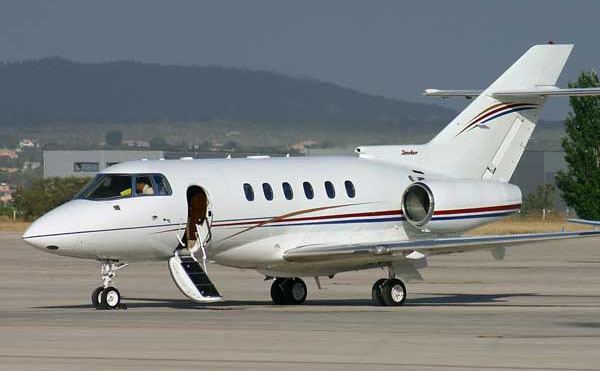 | ||
Manufacturers Hawker Beechcraft, Raytheon, Hawker Siddeley, British Aerospace | ||
Hawker 800xp takeoff
The Hawker 800 is a mid-size twin-engine corporate aircraft. It is a development of the British Aerospace BAe 125, and was assembled by Hawker Beechcraft.
Contents
- Hawker 800xp takeoff
- Development
- Design
- Military variants
- Variants
- Civil operators
- Military operators
- Accidents and incidents
- Specifications Hawker 850XP
- References
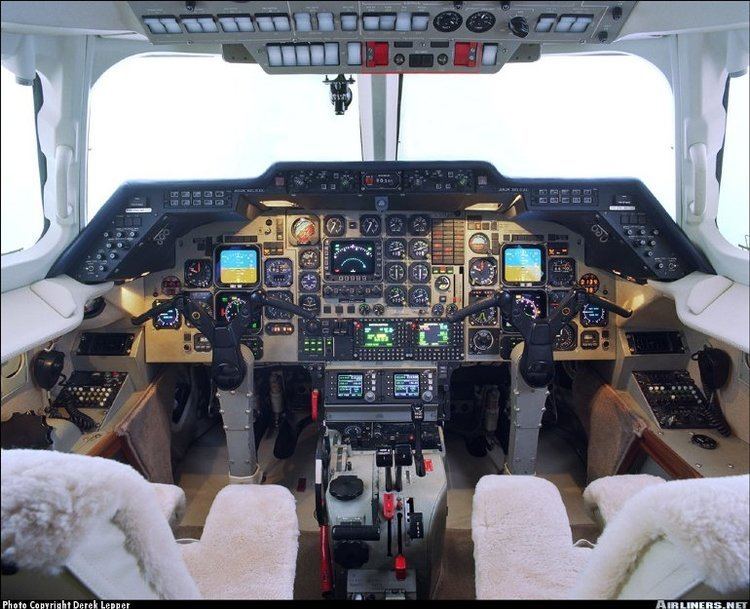
Development
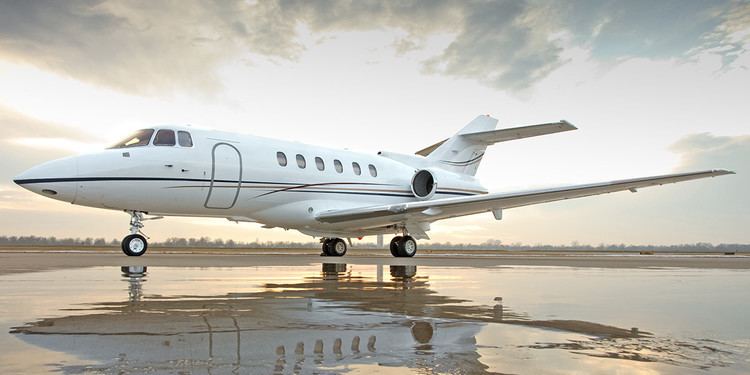
In April 1981, the British Aerospace Board sanctioned the programme to improve the British Aerospace 125-700 series. By May 1983 the new aircraft was ready for its first test flight.
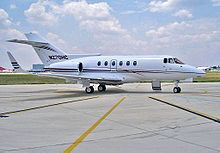
The BAe 125-800 series has a number of modifications and changes over the 700, the most noticeable being the redesigned cockpit windscreen. Accompanying this are a modified rear fuselage fairing, as well as a glass cockpit and uprated (from 3,700 to 4,300 lb thrust) Garrett TFE731-5R-1H engines. British Aerospace also improved the wing by incorporating new outer wing sections. This helped to reduce drag and improve aerodynamic efficiency.
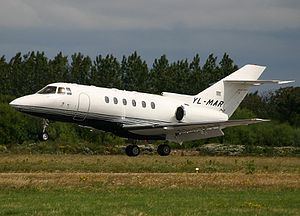
The 125-800 series would become a sales success. From the first BAe 125 flight in August 1961 it took nineteen years until the 500th airframe was sold. In a little over five years British Aerospace were registering the 200th sale of the 800 series.
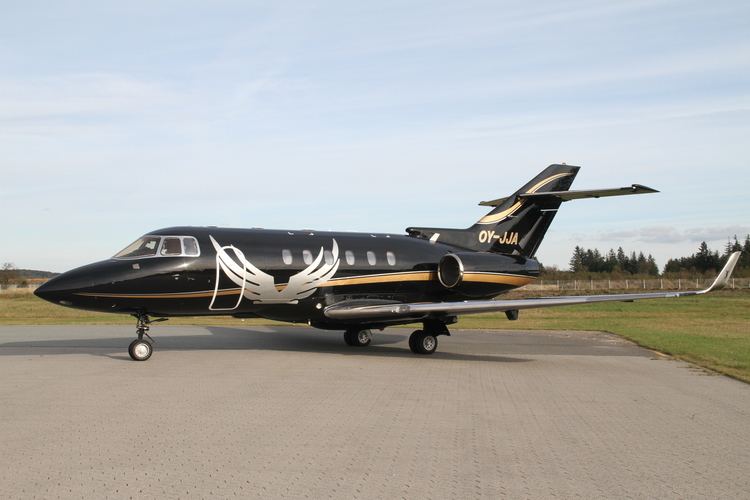
In 1994 Raytheon (who hold bought Beech Aircraft Corporation in 1980) acquired Corporate Jets. The new entity being known as Raytheon Aircraft. In March 2007, Raytheon Aircraft Company was sold to Hawker Beechcraft Corp., a company formed and controlled by GS Capital Partners and Onex Partners of Canada.
The last version was the Hawker 850XP, which was certified for operation in March 2006. The 850XP is identical to the 800XP except that it includes winglets, which have extended its operating range by 100 nautical miles (190 km). This version also incorporates upgraded avionics and a redesigned interior. The Hawker 850XP essentially fills the gap left behind by the Hawker 1000 when production of that aircraft ceased.
Two new variants were announced in October 2006 for future deliveries:
After the 2013 bankruptcy of Hawker Beechcraft the surviving company discontinued its business jet range, including the 800 series, although parts support is still ongoing.
Design
The Hawker 800 is similar to most modern airframes in requiring sub-assemblies to be constructed away from the final point of manufacture. The fuselage sections, wings and control surfaces are manufactured and assembled in the United Kingdom in a combination of Hawker Beechcraft's own facility and those owned by Airbus UK, which inherited much of BAE Systems's civil aircraft manufacturing capacity. These sections are partially fitted out and installed with control surfacing and major systems before being shipped to Hawker Beechcraft's main manufacturing site in Wichita, Kansas for final assembly, fitting out and testing.
Military variants
Japan uses a maritime search and rescue variant of the Hawker 800. It is designated the U-125A in Japan Air Self-Defense Force service. This variant has large observation windows, a flare and marker-buoy dispenser system, life-raft and emergency equipment dropping system and enhanced salt water corrosion prevention. The aircraft also has a Toshiba 360-degree search radar, melco thermal imaging equipment and other military communications equipment for its mission.
A military version of the Hawker 800XP is in use by South Korea for tactical reconnaissance, surveillance and SIGINT (SIGnals INTelligence) tasks, and 8 specially equipped aircraft were delivered in 2000. The Republic of Korea Air Force calls them RC-800s, and they are based at Seongnam.
Variants
Civil operators
The aircraft is operated by private individuals, companies and executive charter operators, and in fractional ownership programs.
Military operators
Accidents and incidents
10 November 2015: An aircraft identified as a Hawker 800 crashed into an Akron, Ohio apartment complex shortly before 3:00pm (15:00) EST in rainy weather, near the intersection of Skelton and Mogadore Roads, while on approach to Akron Fulton International Airport. Witnesses reported hearing a loud explosion, and seeing smoke/flames as the crash occurred. All nine occupants of the aircraft, including both pilots, were killed in the crash. Akron police units were the first to report to the scene, followed shortly by firefighters and the Ohio State Highway Patrol. The National Transportation Safety Board dispatched an incident team to the site of the crash, and will assume leadership in the investigation.
Specifications (Hawker 850XP)
General characteristics
Performance
